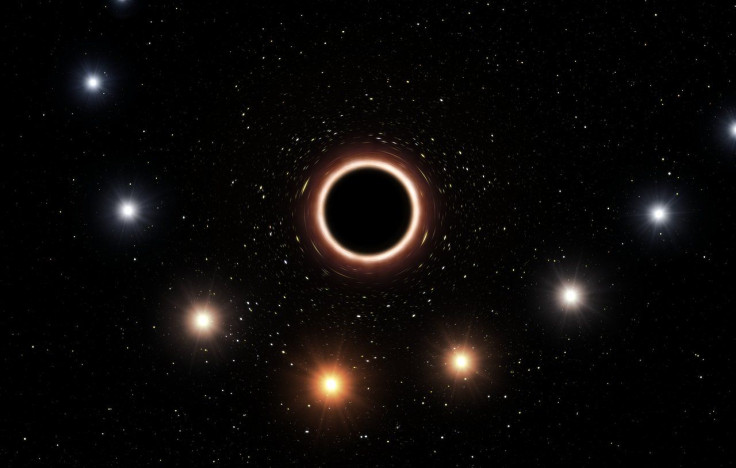Einstein’s Theory Of Relativity Validated Near Milky Way’s Central Supermassive Black Hole

Einstein’s theory of general relativity has just passed one of the toughest challenges ever — an observational experiment conducted in the extreme environments created by the supermassive black hole sitting at the center of our galaxy.
Some 26,000 light years away from Earth, a supermassive black hole weighing as much as four million suns remains shrouded in a thick cloud of dust. The humongous void, popularly known as Sagittarius A*, has an incredibly strong gravitational field, which made the conditions in its proximity ideal to test different theories of gravitational physics.
Scientists have been studying this black hole for years, but not many know it is also orbited by a small group of stars that make a close pass from time to time. One of these stars, named S2 or S0-2, made its closest approach to the black hole in May 2018, giving astronomers an opportunity to test Einstein’s theory of general relativity.
During its closest approach, which is a point known as pericenter, S2 came within 20 billion kilometers of the black hole. This might sound like a long way by Earth standards, but on the cosmological scale, the star was so close that its orbital speed increased up to a whopping 25 million kilometers per hour or three percent of light speed due to the void’s intense gravitational tug.
“This is the second time that we have observed the close passage of S2 around the black hole in our galactic center. But this time, because of much improved instrumentation, we were able to observe the star with unprecedented resolution,” Reinhard Genzel, who led the international team behind the work, said in a statement. “We have been preparing intensely for this event over several years, as we wanted to make the most of this unique opportunity to observe general relativistic effects.”
According to the predictions in the theory of relativity, a star’s passage through a black hole’s intense gravitational field should stretch its light to longer wavelengths, causing its color to shift slightly to red. The behavior, also known as gravitational redshift, has widely been theorized and was observed when the Genzel and colleagues used European Southern Observatory’s Very Large Telescope (VLT) to observe S2’s closest orbital approach to the black hole in infrared.
The team used VLT’s SINFONI, GRAVITY and NACO instruments to measure the velocity of the star and observe its motion around the black hole, despite the thick the light-observing dust shrouding it.
“Our first observations of S2 with GRAVITY, about two years ago, already showed that we would have the ideal black hole laboratory,” Frank Eisenhauer, principal investigator of GRAVITY and the SINFONI spectrograph, added in the statement. “During the close passage, we could even detect the faint glow around the black hole on most of the images, which allowed us to precisely follow the star on its orbit, ultimately leading to the detection of the gravitational redshift in the spectrum of S2.”
Now, as the star moves away from the black hole, the team plans to continue its observation to test other relativistic effects, such as rotation in its orbit.
The study titled, “Detection of the gravitational S2 near the Galactic massive black hole,” was published in the journal Astronomy & Astrophysics.
© Copyright IBTimes 2024. All rights reserved.





















